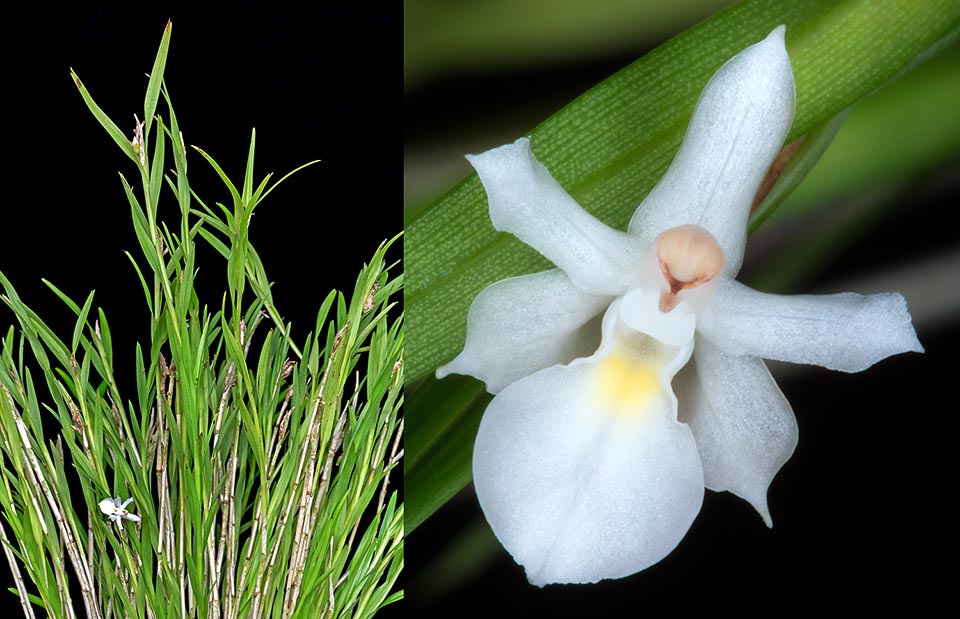Family : Orchidaceae

Text © Pietro Puccio

English translation by Mario Beltramini
The species is native to New Guinea where it grows as epiphyte on the trees of the humid mountain forests at medium and high altitudes.
The name of the genus is the combination of the Greek substantives “ἄγρωστις” (agrostis) = grass, weed and “φύλλον” (phyllon) = leaf; the specific name is the combination of the Latin numeral adjective “unus, a, um” and of the substantive “flos, -oris” = flower, with obvious reference.
The Agrostophyllum uniflorum Schltr. (1905) is an epiphytic species, 20-45 cm tall, forming dense tufts with filiform roots and thin erect stems, slightly compressed laterally, provided of numerous sub-erect alternate leaves, distichous, linear with bifid apex, 4-7 cm long and 2-4 mm broad, and foliar sheaths wrapping totally the stem. Terminal inflorescences bearing usually only one minute white flower with pale yellow spot at the base of the labellum. Oblong-lanceolate sepals with apiculate apex, 0,7-1 cm long and 2-3 mm broad, linear petals with acute apex, 0-7-0,8 cm long and 2-3 mm broad; ovate labellum with acute apex, 0,5-0,6 cm long and broad, and sessile ovary, about 0,7 cm long. The fruit is a 0,7 cm long fusiform capsule. It reproduces by seed, in vitro, and by division with each section provided of at least 3-4 stems.

Epiphyte frequent in New Guinea, Agrostophyllum uniflorum is instead very rare in cultivation. Species for lovers with tiny and isolated flowers, not without charm © Giuseppe Mazza
Species diffused in nature, but rarely present in cultivation, of interest mainly botanical, requires a semi-shady position, intermediate temperatures, 18-28 °C, high humidity, 70-85%, and constantly moving air. The waterings must be regular during the growth period, more reduced during the vegetative rest, but without ever allowing the substratum to dry up completely, utilizing rain water, demineralized or by reverse osmosis; in presence of high temperatures and low atmospheric humidity are to be done nebulizations with water at ambient temperature. It can be cultivated in pots or baskets, utilizing a very draining compost formed by fragments of bark with the addition of coarse peat, charcoal and polystyrene fragments, or mounted on trunks, rafts of cork or of arborescent ferns roots with a layer of sphagnum at the base to maintain the humidity. Repottings and possible divisions are to be done by the vegetative restart.
The species is reported in the appendix II of CITES (species whose trade is internationally ruled).
Synonyms: Agrostophyllum oliganthum Schltr. (1912); Agrostophyllum biflorum Ridl. (1916).
